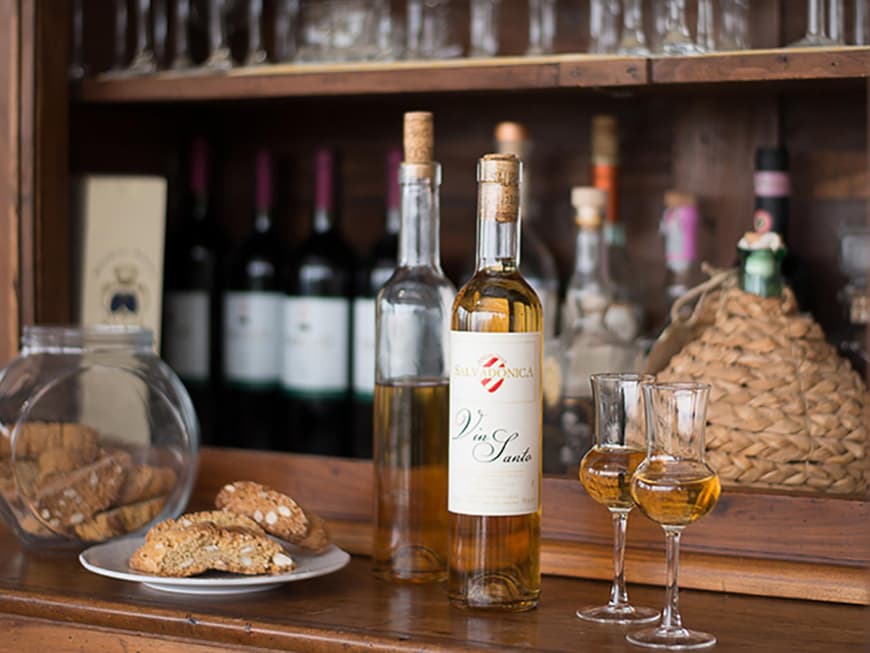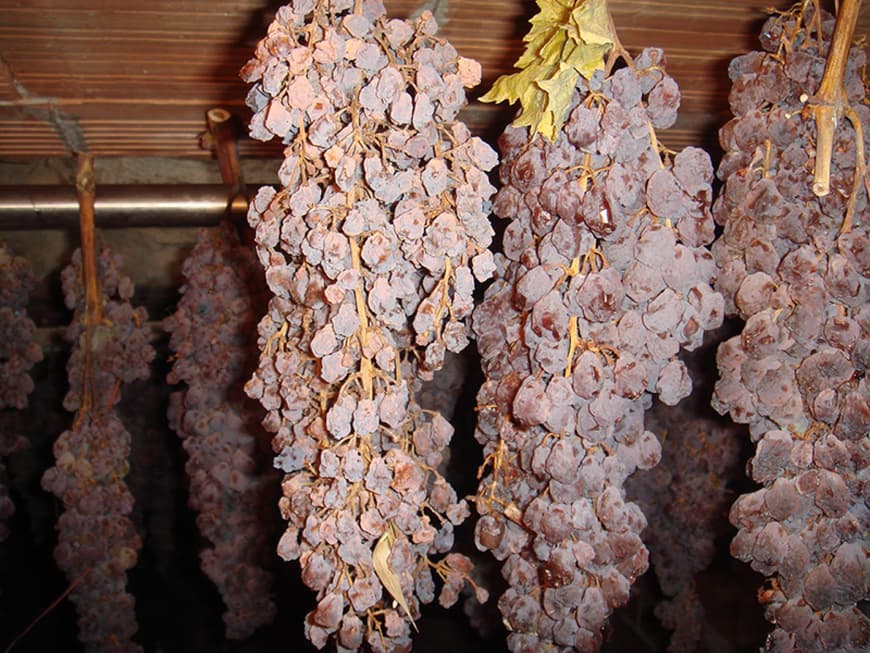
Vin Santo is a classic Italian dessert wine from Tuscany, but it is now produced almost everywhere in central Italy and sometimes also in Trentino. In some regions of Tuscany, e.g. the Val d'Arbia region, it has even been awarded D.O.C. status (meaning "controlled designation of origin" and is a seal of quality for food and wine from Italy). However, the majority of Vin Santo wines are produced without D.O.C. classification, as many winegrowers have their "own recipe" for producing Vin Santo. As a result, there are significant differences in taste and quality.

Grape drying in the attic © Gabriele Cantini
Why "holy wine"?
According to tradition, the wine was given its religious name because it is only pressed between the end of November (according to some D.O.C. regulations, only from December 1 at the earliest) and Holy Week. In Italian, Holy Week is called "Settimana Santa" and so the name of the pressing period was transferred to that of the wine. After the harvest, the grapes are dried in the traditional way until they are almost raisin-like. Drying causes the grapes to lose water and their taste becomes more intense and sweeter. This means that pressing often takes place at Easter.
The time of pressing depends on the degree of sweetness that is to be achieved through the drying process. Despite the concentration of sweetness emanating from the grapes, the wine can range from dry to very sweet. Maturation after pressing takes place mainly in oak barrels. The must is traditionally placed in oak barrels from which the Vin Santo from previous productions has only just been removed. When removing the must, care is always taken to ensure that the sediment from the previous wine remains in the barrel. This is partly responsible for the good taste of the Vin Santo and forms the basis of the new wine. The viscous residue is often referred to as "madre". Traditionally, the barrels are sealed with cement and only opened again after 2 to 6 years.
In the past, and still today in small wineries, the Vin Santo was stored in the "Vinsantaia" (attic on the winery), i.e. under the roof and thus exposed to the summer heat as well as the cold of winter. As the loss of liquid from the barrels due to evaporation was not compensated for, the result was a highly oxidative ageing process, which is responsible for the typical notes of Vin Santo, such as dried apricot, honey, spices and nuts. Nowadays, efforts are made to keep the wine fresher by storing it at more constant temperatures.
What does it go with?
Vin Santo is characterized by its amber yellow color. Its aroma is reminiscent of raisins, apricots, honey and vanilla and can be enjoyed at a slightly chilled drinking temperature of 6 to 8 degrees Celsius. It is traditionally served with almond cookies such as the rather crunchy cantuccini. Who hasn't wondered how to eat the twice-baked almond cookies, apart from dipping them in coffee first? Alternatively, you can dip them briefly in the delicious dessert wine. This not only makes the cantuccini more tooth-friendly, but also enriches them with the aromas of Vin Santo. In Umbria, it is often served with the Easter cake "Ciaramicola" and the "Ciambellone", a type of wreath cake. In the latter, the wine is also occasionally used as a baking ingredient. Finally, for lovers of good cheese, the combination of pecorino and honey makes for a very special treat.
The right wine for your Easter menu
Are you still looking for the right wine for your Easter menu? Then you should definitely take a look at the article "Easter: How to find the perfect wines for your menu". Here, the wine experts at vinoa.de give you tips on which wine goes best with lamb, fish and dessert!
